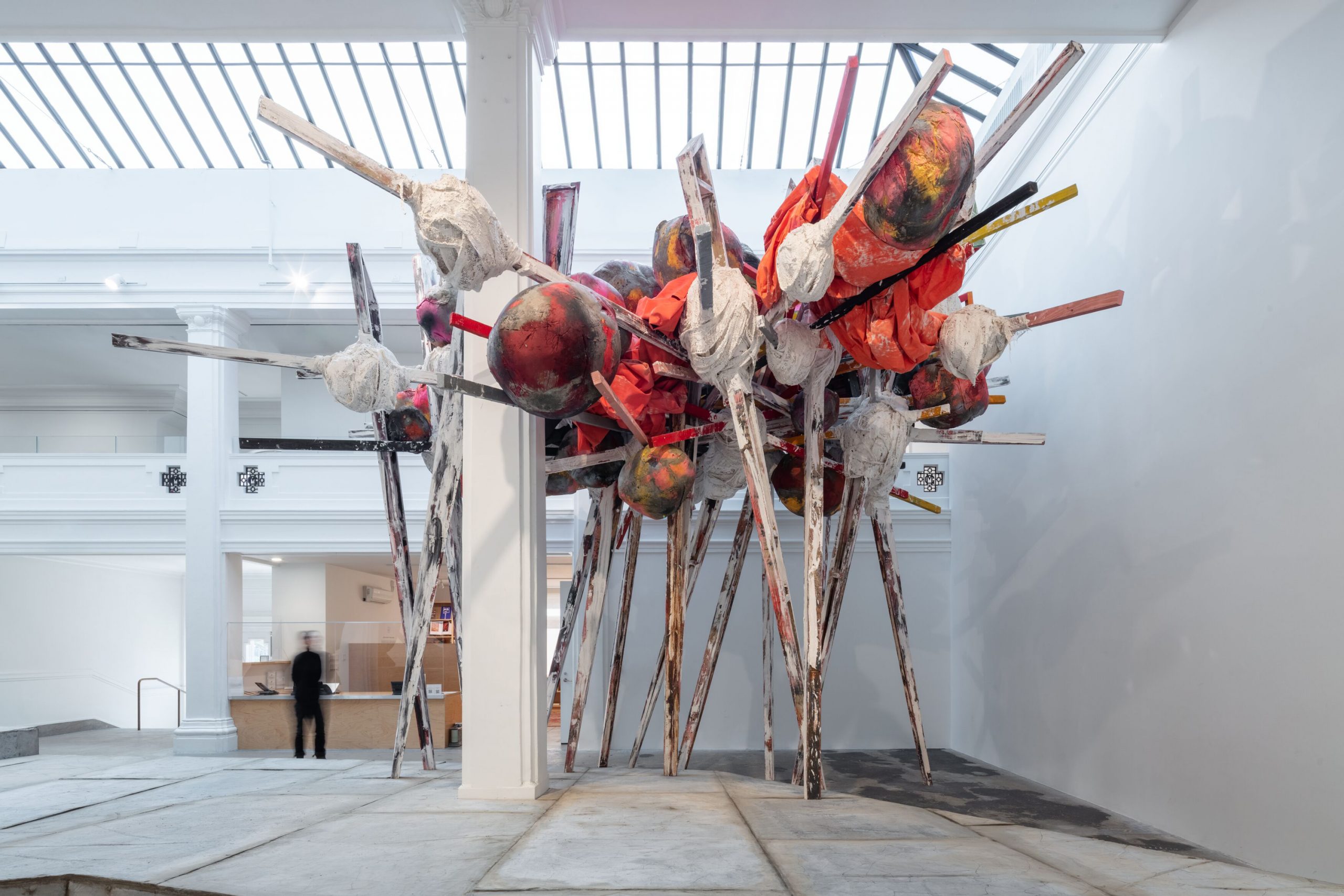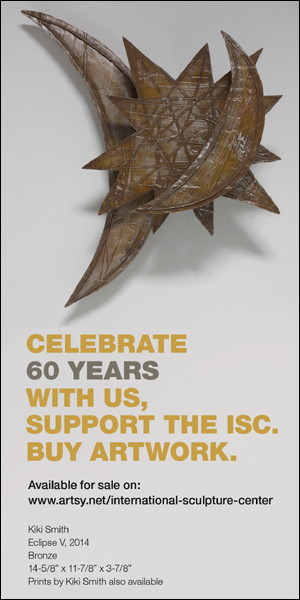Los Angeles
Every view of Phyllida Barlow’s current exhibition takes on a filmic quality—the work seems to shift, to be in the process of constantly transferring weight, and everything seen appears nothing more than a “glimpse,” as indicated by the show’s apt title. The monumental pieces presented in the main space differ radically from each other, which is the most salient characteristic of Barlow’s work. Her range of interests is astonishingly expansive and varied. As you look, you can catch influences: Modernism, Minimalism, post-Modernism, yet what she extracts, she transforms into something completely contemporary and entirely sui generis. Barlow’s work is also fiercely female—there are no male sculptors making work like this, no one combining the hard and unyielding with the soft in the same way, no one translating characteristics of the body into architectural form. Her repertoire of fabrication techniques rejects refinement in favor of the frankly DIY, exposing processes and decisions rather than concealing them with “craft.” The works in “glimpse”—which remains on view through May 8, 2022—toy with their cavernous, elegant setting (an old bank building replete with columns, a mezzanine, and peaked glass ceiling) to create a theatrical and playful environment. Barlow pushes the space in an entirely physical way, electrifying the long, high, narrow area whose columns block and reveal every viewpoint.
The main room is dominated by a knee-height, multi-partite, gray concrete-skinned floor structure that extends through the center of the room for nearly its entire length. Oddly tilted, rising and falling, the gridded untitled: stage functions as a staging point for the three two-story-high sculptures placed in and along its sides. Together, these four constructions occupy the space so extensively that they push viewers to the edges of the room.
Aside from stage, the somber middle structure, untitled: catcher ii is the only object in the exhibition that lacks Barlow’s signature use of color. Propped up on cement and steel piers, it raises steel masts that suspend four gray billows of gauzy fabric coated with flaking crusts of cement. Each mast is counterweighted by truncated concrete cylinders.
untitled: flight iv, the towering, confrontational architectural piece first seen on entering the room, almost blocks access and nearly obscures the sight of other objects. Over two stories high, it thrusts up two opposed staircases toward the glass ceiling. These steps are supported by a crowd of disconcertingly slender, V-shaped legs; the entire structure is textured by swipes of plaster and covered with brushstrokes of color.
At the other end of the room, the wobbly structure of untitled: undercover ii resembles a freakish tree held up by colorful balloon-shaped objects jammed into and around its branches. Orbs of plaster-covered white gauze and colorful swathes of fabric, applied or stuffed in after assembly, bandage and conceal points of connection. It’s the most vivid piece in the show.
Barlow, who is 77, demonstrates that she is at the top of her game; these monumental pieces were all made in 2020. She’s the real thing—brilliantly inventive, a sculptor’s sculptor—a risk-taker creating the fashion, not yielding to it.




